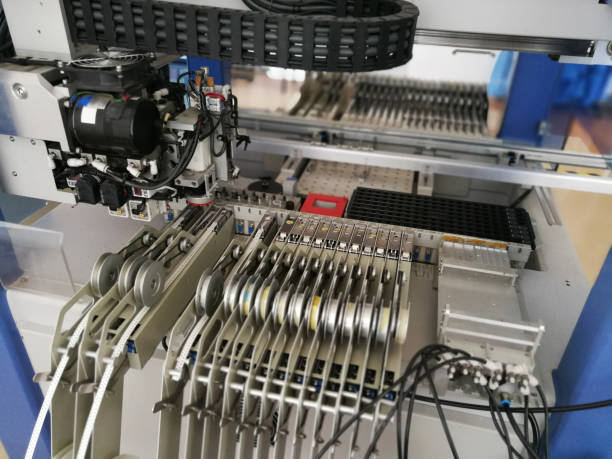
Whenever it comes to constructing published motherboard (PCB) efficiently, the pick-and-place maker is the heart of your surface area place technology (SMT) line. These makers automate the positioning of Surface Mount Devices (SMD) with rate and precision, considerably enhancing efficiency and quality in contemporary electronic devices manufacturing. However with a wide range of alternatives in the market from compact models for pattern to rapid devices for mass production picking the appropriate SMT pick-and-place machine can be discouraging.
Recognize Your PCB Manufacturing Volume and Intricacy
The first step in selecting the right smt pick and place machine is analyzing your production volume and the intricacy of your PCB styles. Assuming that you're running little sets or prototypes, a guidebook or semi-automatic SMD pick-and-place maker could be adequate. For mid to high-volume production, an automated pick-and-place maker is important to satisfy throughput and consistency demands. Additionally, think about the variety of Surface Mount Devices (SMD) you utilize. Facility boards along with fine-pitch elements, BGAs, or mini components call for a machine with high accuracy, advanced vision systems, and fine positioning capacity.
Evaluate Speed vs. Reliability Trade-Offs
Not all pick-and-place makers are produced equal. Some are developed for blazing-fast rates with moderate accuracy, even though others focus on ultra-fine placement for miniaturized parts. The placement rate (determined in elements per hour, or CPH) can vary from a couple of thousand to over 100,000 CPH relying on the equipment's capacity. If your PCB assembly line focuses on high throughput over limited tolerances, you might favor a high-speed design. However, for products like medical devices or aerospace electronics, where precision is vital, select an smt pick and place machine that stresses accuracy, even at the expense of rate.
Check Feeder Ability and Versatility
Feeder capacity describes the amount of different components the equipment can deal with in a single run. For settings up with a large bill of products (BOM), your maker needs to fit a higher number of feeders. Additionally, seek adaptability in feeder kinds some machines can take care of tape, tube, tray, and even bulk feeders, which expands your part managing capabilities. Advanced designs even allow for feeder renewal without halting production, which considerably increases uptime in continual production environments.
Check Software and Integration Capabilities
A contemporary automated pick-and-place equipment ought to include user-friendly, straightforward software program that permits easy shows, CAD import, and real-time procedure tracking. Integration with various other SMT devices such as pattern printers, reflow stoves, and assessment systems is important for a fully enhanced production line. Some machines provide Industry 4.0 functions like remote diagnostics, predictive upkeep signals, and production analytics, which can enhance general performance and responsible.
Final Thought
Selecting the appropriate SMT pick-and-place equipment is an essential choice that straight influences your PCB production line's performance, scalability, and item quality. By thinking about production volume, equipment speed and precision, feeder choices, software application integration, and complete price of possession, you can make a knowledgeable financial investment that satisfies your present demands and future growth. Regardless if you're putting together fundamental PCBs or high-density electronic boards, the right pick-and-place system will simplify your procedure and maintain your manufacturing competitive.
